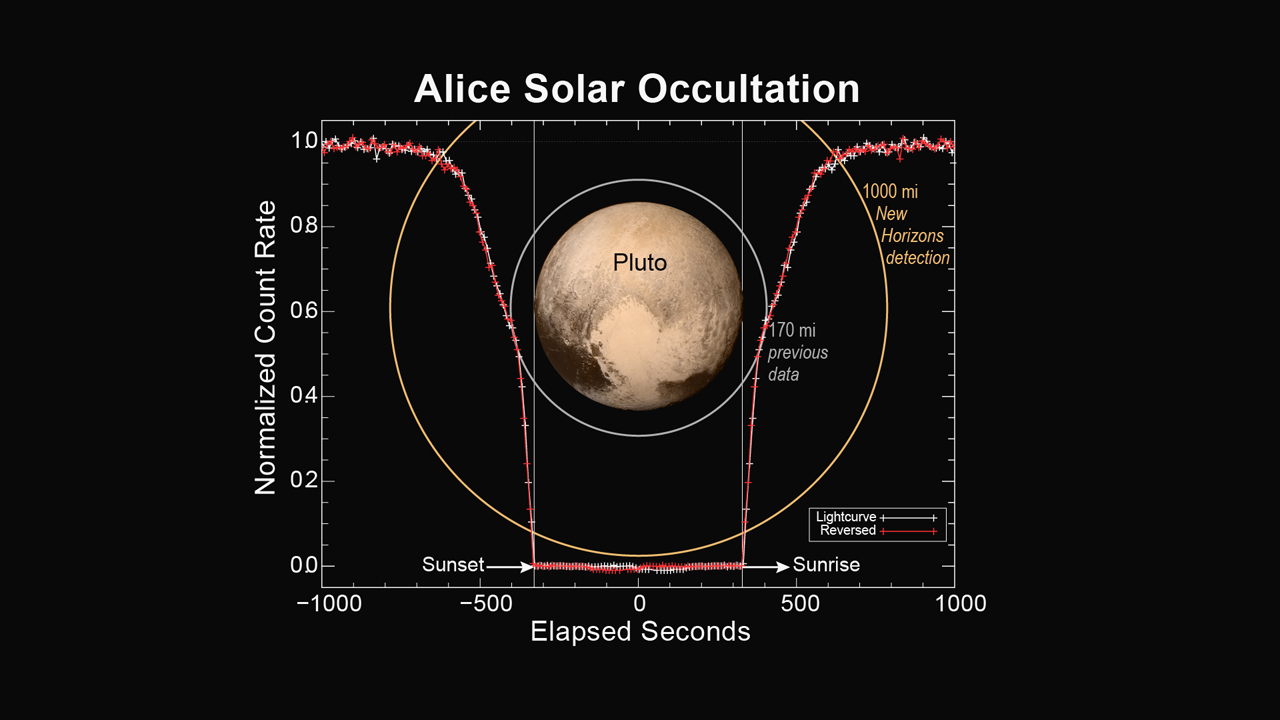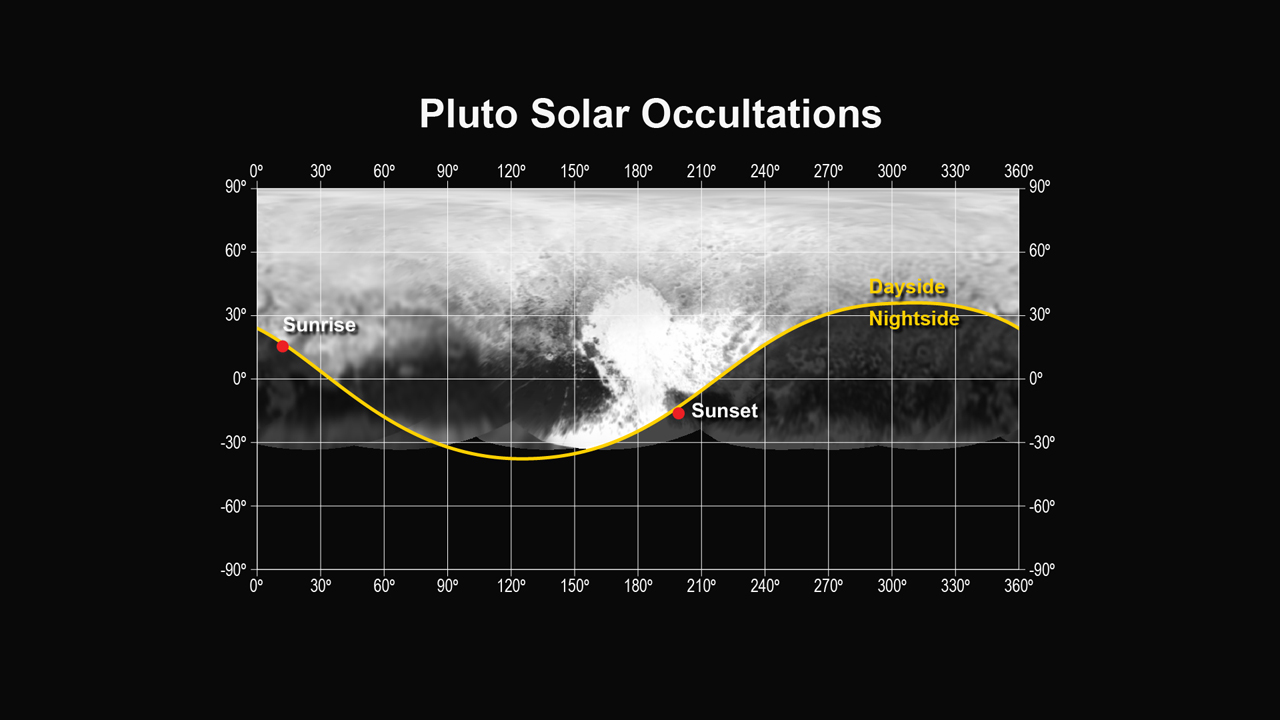Scientists working with NASA’s New Horizons spacecraft have observed Pluto’s atmosphere as far as 1,000 miles (1,600 kilometers) above the surface of the planet, demonstrating that Pluto’s nitrogen-rich atmosphere is quite extended. This is the first observation of Pluto’s atmosphere at altitudes higher than 170 miles above the planet’s surface (270 kilometers).
The new information was gathered by New Horizon’s Alice imaging spectrograph during a carefully designed alignment of the sun, Pluto, and the spacecraft starting about an hour after the craft’s closest approach to the planet on July 14. During the event known as a solar occultation, New Horizons passed through Pluto’s shadow while the sun backlit Pluto’s atmosphere.
“This is only the beginning for Pluto atmospheric science” says New Horizons scientist Andrew Steffl of the Southwest Research Institute in Boulder, Colorado. “Next month, the full Alice occultation dataset will be sent to Earth for analysis. Even so, the data we have now show that Pluto’s atmosphere rises higher above its surface, in relative terms, than does the Earth’s.”
Credits: NASA/JHUAPL/SwRI





























